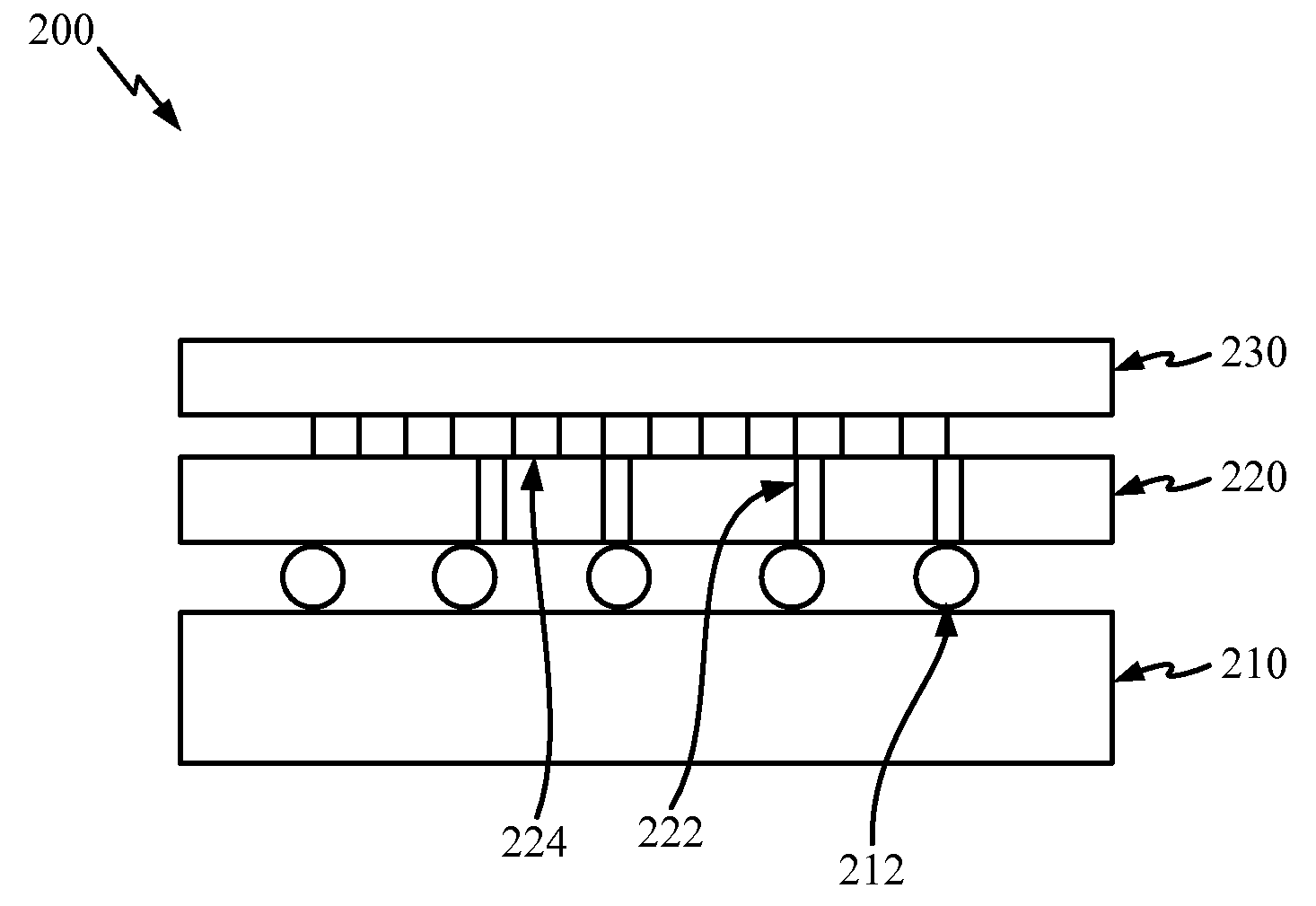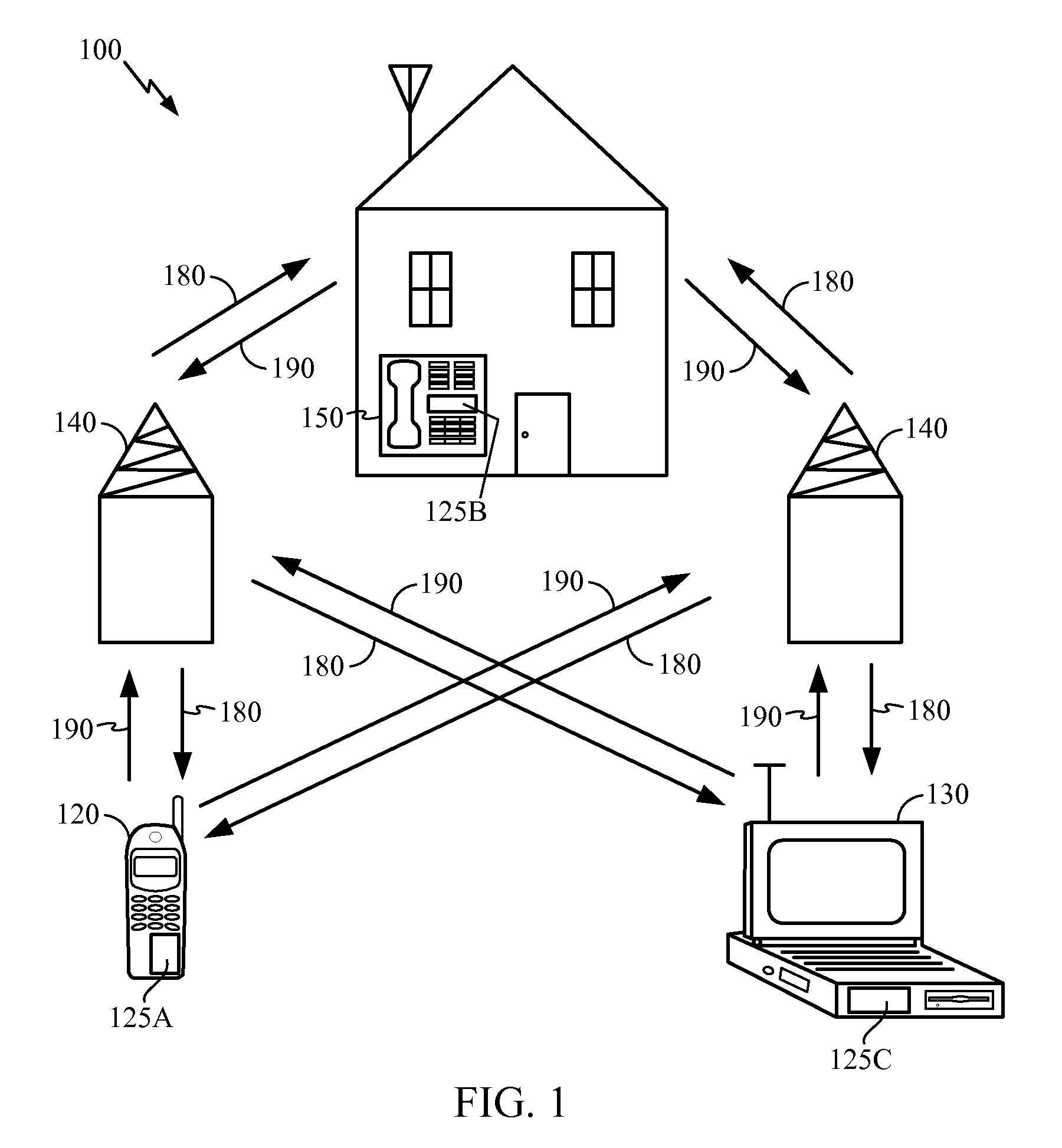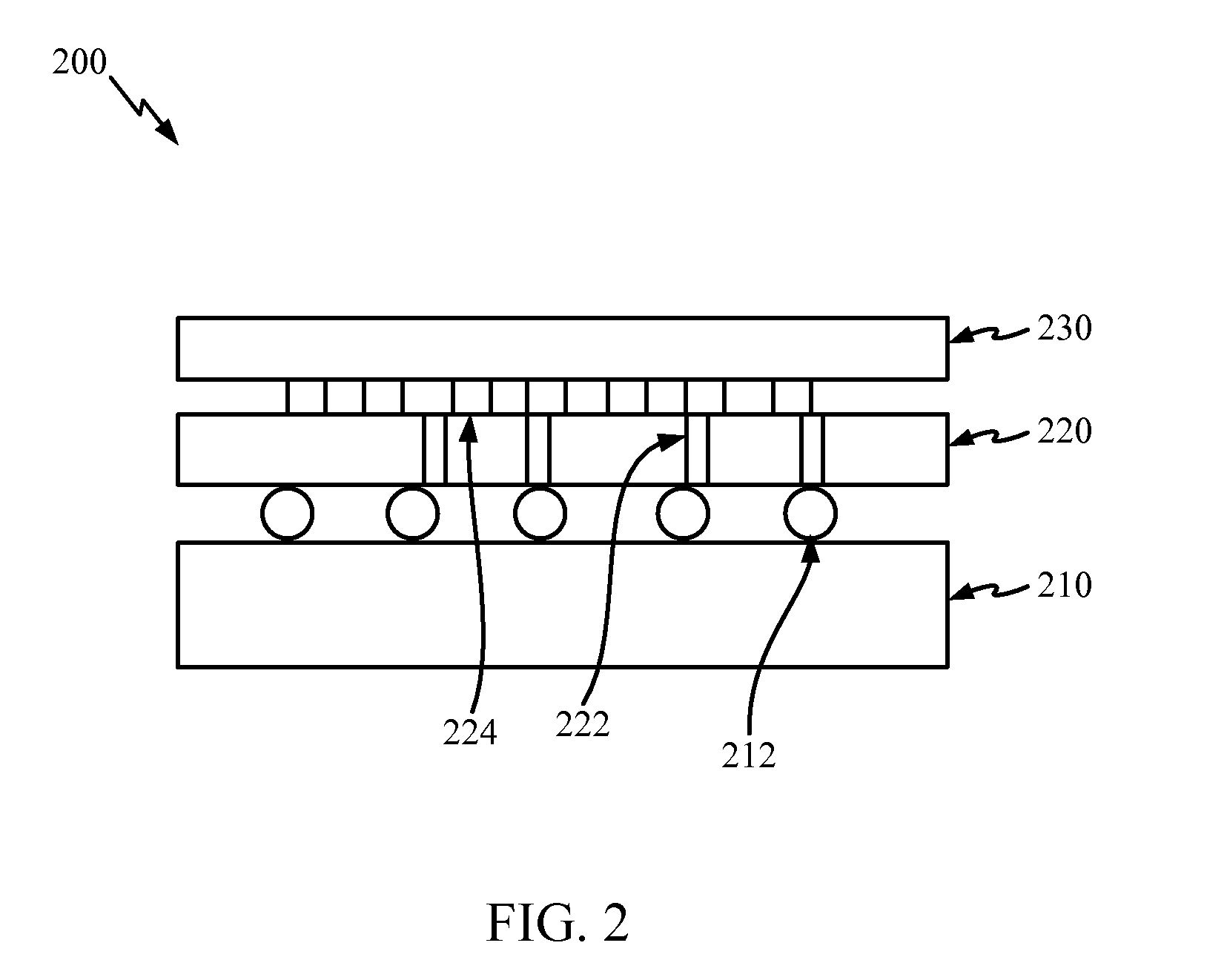Stacked Die Parallel Plate Capacitor
a parallel plate capacitor and die-cutting technology, applied in the field of integrated circuits, can solve the problems of increasing the number of transistors that are included in the integrated circuit, the conflict between the number of transistors in the integrated circuit and the size of the integrated circuit, and the complexity of the circui
- Summary
- Abstract
- Description
- Claims
- Application Information
AI Technical Summary
Problems solved by technology
Method used
Image
Examples
Embodiment Construction
[0016]FIG. 1 is a block diagram showing an exemplary wireless communication system 100 in which an embodiment of the disclosure may be advantageously employed. For purposes of illustration, FIG. 1 shows three remote units 120, 130, and 150 and two base stations 140. It will be recognized that typical wireless communication systems may have many more remote units and base stations. Remote units 120, 130, and 150 include IC devices 125A, 125B and 125C, that include the circuitry disclosed here. It will be recognized that any device containing an IC may also include the circuitry disclosed here, including the base stations, switching devices, and network equipment. FIG. 1 shows forward link signals 180 from the base stations 140 to the remote units 120, 130, and 150 and reverse link signals 190 from the remote units 120, 130, and 150 to base stations 140.
[0017]In FIG. 1, remote unit 120 is shown as a mobile telephone, remote unit 130 is shown as a portable computer, and remote unit 150...
PUM
 Login to View More
Login to View More Abstract
Description
Claims
Application Information
 Login to View More
Login to View More - R&D
- Intellectual Property
- Life Sciences
- Materials
- Tech Scout
- Unparalleled Data Quality
- Higher Quality Content
- 60% Fewer Hallucinations
Browse by: Latest US Patents, China's latest patents, Technical Efficacy Thesaurus, Application Domain, Technology Topic, Popular Technical Reports.
© 2025 PatSnap. All rights reserved.Legal|Privacy policy|Modern Slavery Act Transparency Statement|Sitemap|About US| Contact US: help@patsnap.com



